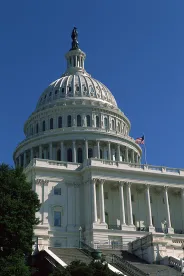Over the past few weeks, the Capitol Health Record has detailed the passage of the House and Senate Congressional Budget Resolutions and the release of the President’s Budget. Below we breakdown the differences between each of the major steps in the Federal budget process.
President’s Budget
-
Deadline: President must submit to Congress on or before the first Monday in February.
-
Purpose: Serves as a political blueprint of the President’s priorities and a guideline for the Congressional appropriations process.
-
Key players: President, Administration, Office of Management and Budget (OMB)
-
No force of law.
Congressional Budget Resolution
-
Deadline: Each Chamber must pass a budget resolution by April 15th each year.
-
Purpose: Provides estimates for spending and revenue and a guide for the Appropriations Committees. Serves as a blueprint of each Chamber’s priorities; priorities may differ between the two Chambers.
-
Key players: House and Senate Budget Committees
-
No force of law.
Appropriations
-
Deadline: Appropriations bills must be passed by the start of the fiscal year (FY) – orOctober 1st of each year. If there is no agreement by October 1st, Congress must pass a continuing resolution (CR) to continue funding federal agencies and programs.
-
Purpose: Twelve bills with jurisdiction over specified federal agencies and programs allocate the money allotted by the budget.
-
Key players: House and Senate Appropriations Committees
-
Once passed by Congress and signed by the President, appropriations bills (or omnibus measures) become law.



 />i
/>i
